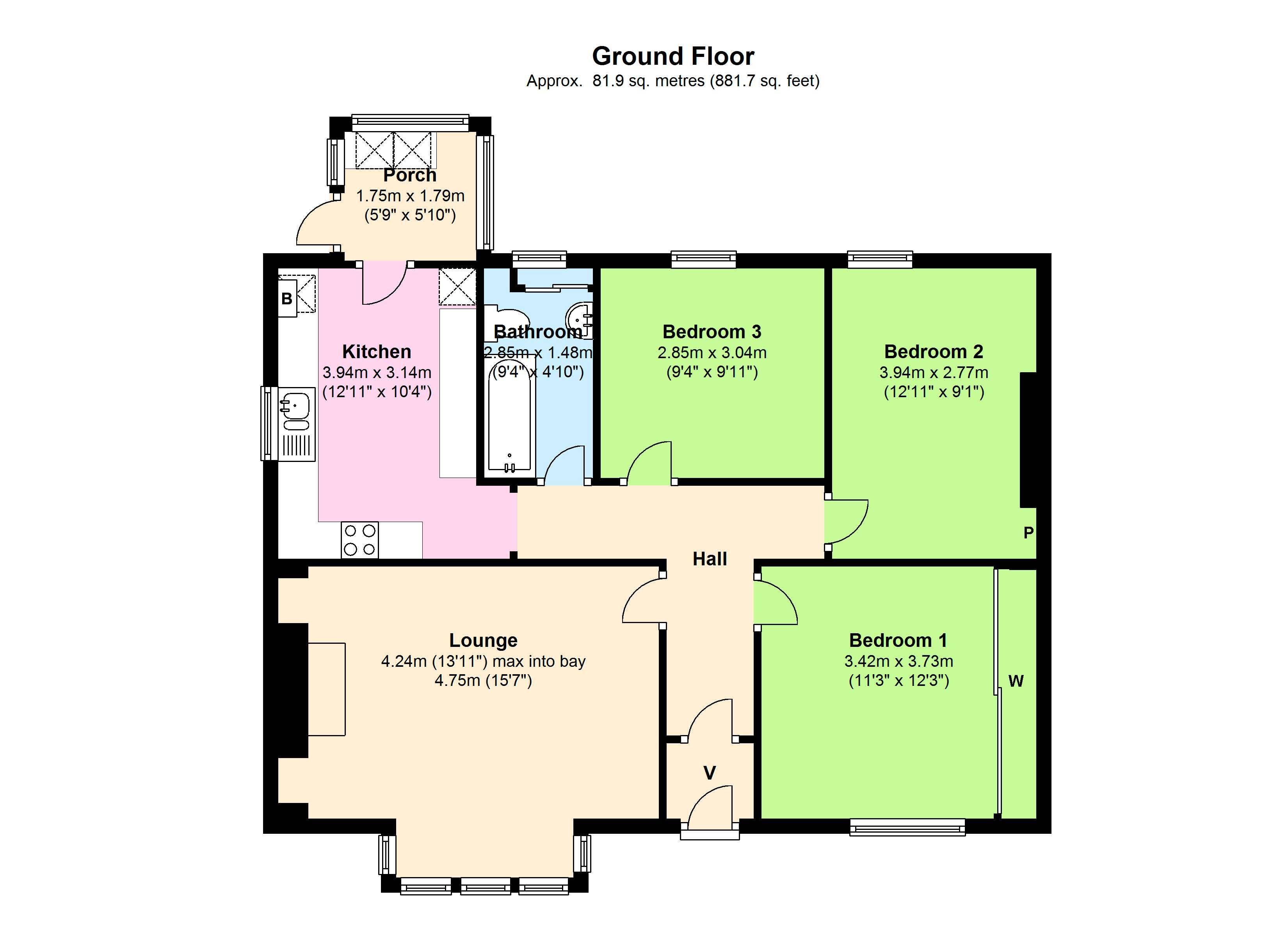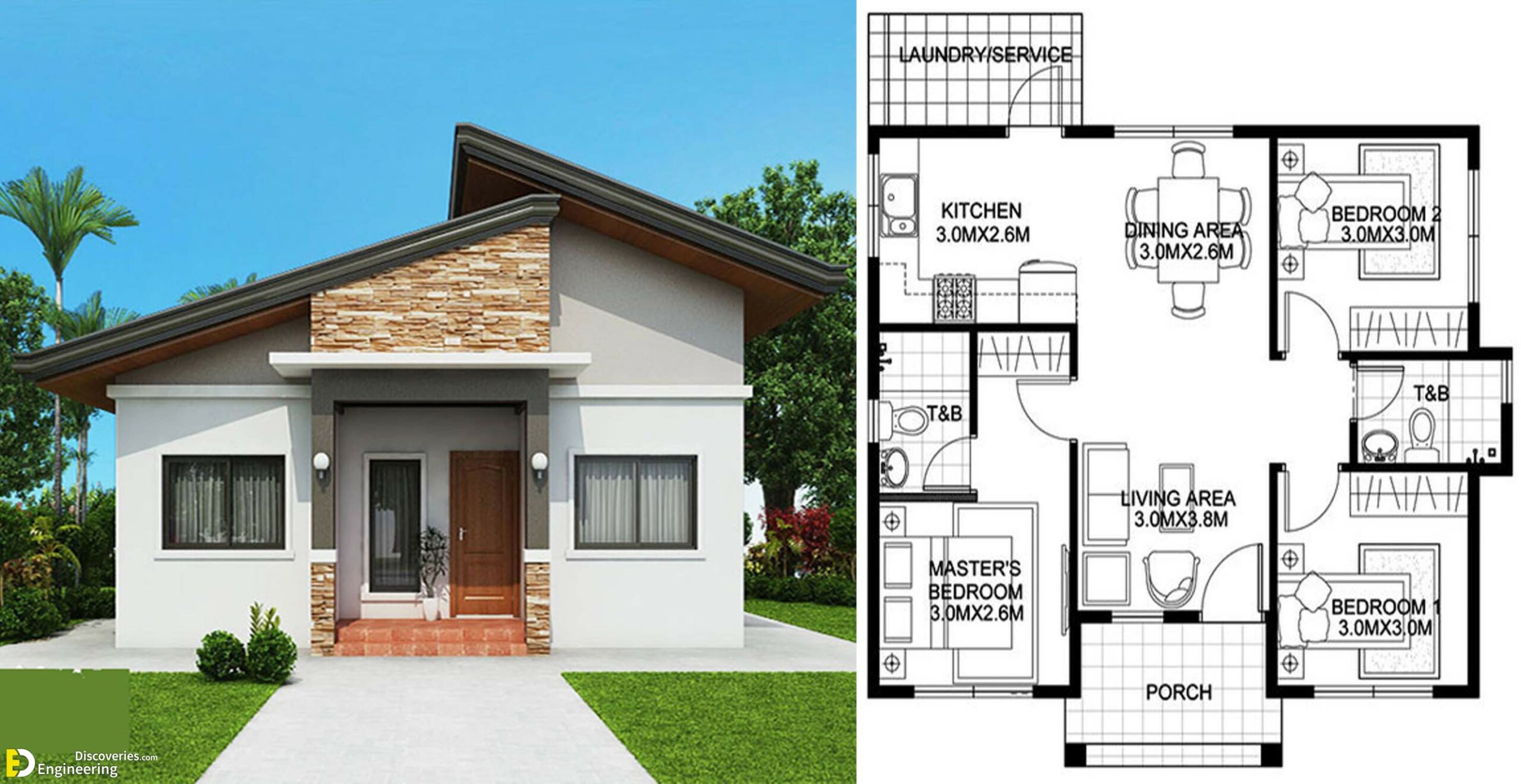Understanding Bungalow House Designs

Bungalow houses are a popular architectural style that originated in the early 20th century and continue to be a favorite for their charm and practicality. Characterized by their single-story design and distinctive features, bungalows offer a unique blend of comfort and functionality.
Key Characteristics of Bungalow Houses
Bungalows are easily recognizable by their distinct architectural elements.
- Single-Story Design: One of the defining features of a bungalow is its single-story construction, which eliminates the need for stairs and makes it accessible for people of all ages and abilities.
- Low-Pitched Roof: Bungalows typically feature a low-pitched roof with wide eaves that extend beyond the walls. This design not only provides shade and protection from the elements but also adds a distinctive aesthetic appeal.
- Front Porch: A welcoming front porch is often a key component of bungalow design, providing a space to relax and enjoy the outdoors. It serves as a transition between the home and the surrounding landscape, enhancing the sense of connection to nature.
Advantages of Bungalow Houses
Bungalows offer several advantages that make them an appealing choice for homeowners.
- Accessibility: The single-story design eliminates the need for stairs, making bungalows highly accessible for people with mobility limitations, families with young children, and older adults.
- Affordability: Bungalows are generally more affordable to build and maintain than multi-story homes, as they require less construction material and have a smaller footprint.
- Energy Efficiency: The compact design and low-pitched roof of bungalows can contribute to energy efficiency. The smaller living space requires less energy for heating and cooling, while the wide eaves provide shade and reduce solar heat gain.
Examples of Bungalow House Styles, Floor plan for bungalow house with 3 bedrooms
Bungalow architecture encompasses a range of styles, each with its own unique design elements.
- Craftsman Bungalow: Characterized by its use of natural materials like wood and stone, Craftsman bungalows often feature exposed beams, built-in cabinetry, and a focus on craftsmanship.
- Prairie Bungalow: Inspired by the open landscapes of the American Midwest, Prairie bungalows emphasize horizontal lines, low-pitched roofs, and a connection to nature. They often feature large windows and a spacious floor plan.
- California Bungalow: These bungalows are known for their relaxed and informal style, often featuring stucco walls, red tile roofs, and a focus on outdoor living. They often have a large porch or patio, inviting residents to enjoy the California sunshine.
Optimizing Space in a 3-Bedroom Bungalow: Floor Plan For Bungalow House With 3 Bedrooms

A 3-bedroom bungalow, with its single-story layout, offers a unique opportunity to maximize space and create a comfortable living environment. By strategically planning the placement of rooms and incorporating smart design choices, you can transform a smaller footprint into a functional and aesthetically pleasing home.
Floor Plan Design for a 3-Bedroom Bungalow
This section explores a possible floor plan design for a 3-bedroom bungalow, focusing on maximizing space utilization and natural light flow. The design prioritizes an open concept living area, strategically placed bedrooms, and efficient bathroom layouts.
Optimizing Space Utilization
- Open-Concept Living Area: Combining the living room, dining area, and kitchen into one open space creates a sense of spaciousness and allows for flexibility in furniture arrangement. This design approach also enhances natural light flow throughout the main living area.
- Strategic Bedroom Placement: Locate bedrooms away from high-traffic areas like the living room and kitchen, ensuring privacy and a quiet environment for sleep. Consider placing the master bedroom in a corner of the house, maximizing privacy and potential views.
- Compact Bathroom Design: Opt for a compact bathroom design with a single vanity and shower/tub combination. This minimizes space usage while ensuring functionality.
Maximizing Natural Light
- Large Windows: Incorporate large windows in the living room and kitchen to allow ample natural light to flood the space. This creates a bright and airy atmosphere, reducing the need for artificial lighting during the day.
- Skylights: Consider adding skylights in the living room or hallway to introduce additional natural light, especially in areas that might otherwise be dimly lit.
- Light Colors: Paint walls in light colors to reflect natural light and create a sense of spaciousness. Avoid dark colors that can make rooms feel smaller.
Comparing Layout Options
This section compares the pros and cons of different layouts for the bedrooms, bathrooms, kitchen, and living areas in a 3-bedroom bungalow. This comparison will help homeowners make informed decisions based on their specific needs and preferences.
Layout Options Comparison
| Layout Feature | Option 1: Open-Concept Living | Option 2: Traditional Layout |
|---|---|---|
| Living Area | Pros: Spacious, bright, flexible furniture arrangement. Cons: Potential noise carryover between areas. | Pros: Separate areas for different activities, quieter. Cons: Can feel cramped, limited natural light. |
| Bedrooms | Pros: Privacy, quiet, flexibility in placement. Cons: Can feel isolated from the main living area. | Pros: Proximity to the living area, easy access. Cons: Less privacy, potential noise disturbance. |
| Kitchen | Pros: Open to the living area, social space. Cons: Potential for cooking smells to spread. | Pros: Separate space, limited noise and odor spread. Cons: Can feel isolated from the living area. |
| Bathrooms | Pros: Compact, efficient use of space. Cons: Limited storage space. | Pros: Larger, more storage space. Cons: Takes up more floor area. |
Utilizing Space Effectively in a Smaller Bungalow
This section provides detailed information on how to utilize space effectively in a smaller bungalow, including smart storage solutions, multi-functional furniture, and open-concept living.
Smart Storage Solutions
- Built-in Shelving: Maximize vertical space by incorporating built-in shelving units in the living room, bedrooms, and hallway. This provides ample storage while maintaining a clean and organized aesthetic.
- Under-Bed Storage: Utilize the space under beds for storing seasonal items, off-season clothing, or extra bedding.
- Wall-Mounted Storage: Install wall-mounted shelves, hooks, and organizers to create additional storage without taking up valuable floor space.
Multi-Functional Furniture
- Sofa Beds: Opt for a sofa bed in the living room to provide extra sleeping space for guests while serving as a comfortable seating option during the day.
- Storage Ottomans: Use storage ottomans as seating and to store blankets, books, or other items.
- Folding Tables: Employ folding tables for dining or work areas, allowing for flexibility and space-saving when not in use.
Open-Concept Living
- Open Floor Plan: An open floor plan eliminates walls between the living room, dining area, and kitchen, creating a spacious and airy feel. This design approach allows for natural light to flow freely and encourages a sense of togetherness.
- Visual Separation: Use furniture placement, rugs, or different flooring materials to define separate areas within the open-concept space, providing visual separation without physical walls.
- Light and Color: Employ light colors and large windows to enhance the feeling of spaciousness in an open-concept living area.
Essential Features for a 3-Bedroom Bungalow

A 3-bedroom bungalow offers a comfortable and efficient living space for families or individuals seeking a cozy and manageable home. When designing a bungalow, several essential features should be considered to maximize functionality, comfort, and aesthetic appeal.
Living Space
A comfortable living space is crucial for a bungalow, as it serves as the central gathering area for relaxation, entertainment, and family time. The living room should be spacious enough to accommodate furniture comfortably, such as sofas, chairs, a coffee table, and entertainment systems. Natural light and ventilation are essential for creating a welcoming and airy atmosphere. Consider incorporating large windows or a bay window to maximize natural light and views.
Kitchen
A well-equipped kitchen is essential for any home, and bungalows are no exception. The kitchen should be designed with functionality and efficiency in mind. Adequate counter space, ample storage, and efficient appliances are crucial for preparing meals and entertaining guests. Consider a layout that allows for a clear flow of movement between the cooking, preparation, and cleaning areas.
Storage
Storage is essential for maintaining an organized and clutter-free home. Bungalows can often benefit from creative storage solutions to maximize space. Consider incorporating built-in shelves, cabinets, or closets to store belongings efficiently. A mudroom or entryway with storage options can help keep the main living areas tidy.
Natural Light and Ventilation
Natural light and ventilation are crucial for creating a healthy and comfortable living environment. Bungalows, with their single-story design, can easily incorporate windows and skylights to maximize natural light. Strategically placed windows can provide cross-ventilation, allowing for fresh air circulation throughout the house.
Outdoor Space
An inviting outdoor space can enhance the overall appeal and functionality of a bungalow. A patio, deck, or garden can provide a space for relaxation, dining, and entertaining. Consider the size and style of the bungalow when designing the outdoor space. A small patio with comfortable seating and a grill can be perfect for intimate gatherings, while a larger deck with a dining area and a fire pit can accommodate larger gatherings.
Floor plan for bungalow house with 3 bedrooms – A well-designed floor plan for a bungalow house with 3 bedrooms prioritizes functionality and flow, often incorporating a dedicated bathroom for each bedroom. While the design of the bathroom itself is crucial, the question of whether bathroom rugs have to match can be explored in the context of the overall aesthetic.
This decision, as discussed in the article do bathroom rugs have to match , depends on personal preference and the overall design scheme of the bungalow, ultimately contributing to the overall sense of cohesion and style.
Designing a floor plan for a bungalow house with 3 bedrooms requires careful consideration of space allocation and functionality. Similar principles apply to designing 3 bedroom flat design plans, which often necessitate creative solutions to maximize living space. A comprehensive guide to designing functional and stylish 3 bedroom flat design plans can be found here , offering insights applicable to both flat and bungalow layouts.
By applying these principles, a bungalow house with 3 bedrooms can be designed to be both comfortable and aesthetically pleasing.